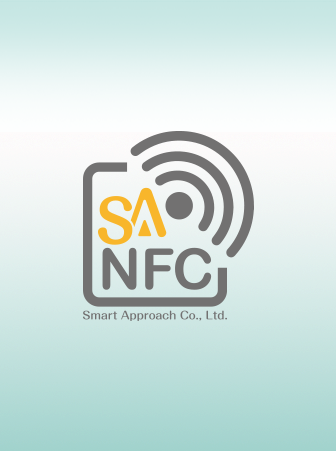Chip shortages lead to RFID rollout
Claire Swedberg
With the double whammy of rising demand and supply delays, the RFID industry could face challenges throughout the year, and the technology’s long-term prospects seem promising.
March 4, 2022
Purchases of RFID technology increased as chip shortages continued to impact hardware production. Few in the RFID industry will miss the irony here: The technology needed to mitigate supply chain delays is being delayed by supply chains. While the source of the challenge is complex, the result can be summed up simply: demand outstrips supply.
The RFID industry faces more than just chip shortages. A global shortage of microchips affects everything from smartphones to electric toothbrushes, as well as the auto, airplane and gaming industries. Reasons include COVID-19-based fab closures, poor supply chain planning (exacerbated by a lack of RFID to track shipments from fab to store), and the low number of players in the wafer fabrication industry. Add to that a series of factory fires, record consumer demand, and the recent war in Europe and soaring energy prices.
“Now we’re seeing companies struggling to get a limited number of chips and scramble to build new fabs,” said Bindiya Vakil, CEO of supply chain solutions company Resilinc. Demand for RFID technology including readers is also growing. This is not expected to stop, so delays in the RFID industry are increasing. For example, RFID technology company Impinj warned in its first-quarter 2022 results that it will be severely impacted by a shortage of wafers and will not be able to meet demand.
“We’re starting to hear more and more about the potential impact of chip shortages on RFID, whether it’s orders not being filled, or deployment lead times being impacted,” said Sandeep Unni, senior director analyst at Gartner, Retail Research Practice. “If the current climate persists, supply is constrained and demand remains high, I suspect this could have broad implications for new projects or ongoing deployments later in the year.”
The bright side of the challenge is that this shortage is largely demand-driven. In fact, companies currently grappling with supply chain disruptions have turned to RFID for visibility to identify bottlenecks and understand where goods are in transit, according to Bill Ray, research vice president at Gartner. This includes the retail market, as well as many other industries such as toll collection, supply chain and logistics, and government programs. “Semiconductors are needed to make semiconductor chips,” Vakil said. “Ironic, isn’t it?”
In the fourth quarter of 2021, IC demand exceeded shipments by more than 50%, according to an earnings report from Impinj co-founder and CEO Chris Diorio. That could mean a slowdown for inlay makers that regularly shut down their production lines. “We continue to believe that if we had more supply, they would increase bookings,” Diorio said in the quarterly report. “Unfortunately, as of today, we haven’t.”
In the first half of this year, Impinj found wafer supply remained largely unchanged, with the company expecting 200mm and 300mm (8- and 12-inch) wafer supply commitments to equal or exceed its The fourth quarterly shipment level to the middle of the year. “But these shipments fell well short of our rapidly growing demand,” Diorio added in the report. “While our foundry partners continue to prioritize our upstream wafers, and we all hope for relief on the process nodes we use, the relief has so far not come — at least, not for our needs.”
Nonetheless, Impinj reports that it will continue to expand its 300mm post-processing capabilities to be ready when wafers return to normal volume. Meanwhile, the company said it had received record bookings and retail demand remained strong. According to a report by IDTechEx, the largest wafer suppliers forecast supply constraints in the next few years, with new wafer fabrication facilities not coming online until 2024 at the earliest.
Most RFID manufacturers rely on chip suppliers and capacity in Asia, and thus share challenges with other industries. What changes is the demand side of the equation. The growth of RFID is driven at least in part by the urgency for higher item-level inventory accuracy. This continues this year with new pending mandates from companies like Walmart (see Walmart Re-Commits to RFID) and Nordstrom (see Nordstrom Issues Supplier Mandate for RFID Tags). As a result, this supply-demand imbalance could exacerbate the supply shortage of RFID compared to other industries, Unni said (see the retailer’s mission is like dominoes).
Some chips used in RFID hardware have a more immediate impact than others. LevaData, a provider of integrated supply management software, is seeing increasing lead times for microchips related to clock timers and oscillators, although RFID-specific data points are limited, said Brian York, vice president of content and user experience at LevaData. . The supply issues for power management ICs and related chips are particularly acute, Ray noted, and they affect readers and supporting technology more than RFID tags, but the result is project delays and partial deployments. For example, semiconductor company NXP has a lead time of 50.9 weeks, while STMicroelectronics has a wait time of 47.4 weeks, according to LevaData.
By the end of 2021, the climate looks more promising, York said. “It looked like we might be hitting an imminent or leveling off lead time,” he recalls. “Then it spiked after December.” In some cases, chip suppliers have responded to shortages by supplying only to customers who have agreed to long-term commitments. Those customers may have to buy next year’s chips at the same price to secure this year’s supply. This benefits larger companies that can make such commitments, Ray said, adding: “However, we expect prices of semiconductors to come down next year, so it remains to be seen whether customers live up to those commitments in a crunch.”
Before facing these challenges, many RFID companies, especially the larger ones, stocked up in advance to prevent supply shortages. However, analysts agree that as these supplies sell, longer lead times and potential price increases are cause for concern. “Having said that,” Unni added, “most of the RFID vendors I’ve spoken with remain optimistic about the industry’s growth prospects and expect overall demand to remain strong.” All RFID tags and chips contacted for this matter The suppliers declined to comment.
Chip shortages are also encouraging technology suppliers to develop new RFID chipsets that perform better and are easier to use in RFID tags. Whether or not the chips are only available with long lead times, Vakil said, will have little impact on the demand or advancement of the technology. But she predicts that over the next few months and even years, “this could slow down the ability to actually produce high volumes.” The good news, Vakil noted, is that discussions have begun to revolve around how the industry can provide for key industries that rely on semiconductor products. Create a supply chain ecosystem to expand.
Part of the answer will focus on better transportation: building rail, roads and infrastructure, and using Internet of Things (IoT) technologies such as RFID to enable visibility into true supply chain self-reliance and resilience. “The focus should be on the ecosystem we’ve created around manufacturing,” Vakil said. For example, she added, semiconductors aren’t sold to people — they’re put into products, many of which are made in Asia. So, for example, by producing them in the U.S. and sending them to Asia to be placed in products, and then shipping those products back to the U.S., users create a more complex supply chain.
“We need to explore a more regionalized supply chain,” Vakil said, in which goods are manufactured closer to the market where they are sold. It takes an entire ecosystem to run a factory,” she explained, noting that it’s not just anyone who can come in and run such a factory. The supply chain relies on qualified professionals to produce, create and transport goods. “We need to plan capacity today, We anticipate demand for the next three to five years. For supply chain experts, this is a great opportunity to design what a supply chain should look like. ”
At the same time, RFID companies are looking for solutions to the problems that arise in 2022. Some hardware vendors have begun redesigning products to fit the available chips, an expensive and risky proposition. “From an engineering perspective, it was really challenging,” York said. Previously, many viewed redesigning a product to meet supply availability as a nuclear option, said Ron Giles, director of consulting services at LevaData. Recently, “redesign has become Plan B,” and it is fraught with challenges if there are further supply issues with even the chosen replacement chips, he said.
Reality behind lead times The
Omicron variant has led to the closure of many factories in Southeast Asia that provide semiconductor packaging. Those facilities have reopened, but delivery times may not adjust at the same pace as production ramps up. “In a way,” says Giles, “[manufacturers] don’t have a lot of incentive to lower their lead times” and deliver earlier than originally forecast, “because they’d rather have as much visibility into their orders as possible. .” He explained that this provides a sense of security for ongoing production.
That conservative plan is being driven by uncertainty, analysts say. “Everyone is on edge right now,” Giles said, “so I don’t think the possibility of manufacturers cutting lead times is likely to impact [RFID product manufacturers] right away. They don’t want to be caught off guard.” Because of this caution, it’s difficult to Know if the available delivery times are completely accurate. “I think a lot of them are now just saying, ‘We don’t see new capacity today,’ so they’re going to continue to have longer lead times for new orders.”
There are also questions about how much inventory is still shipping. , not visible somewhere in the supply chain – that’s the problem RFID is designed to solve. Additionally, some companies have been placing multiple orders with different suppliers, meaning some orders may not actually be active. Over the past two years, RFID companies and other manufacturers have tended to transition from lean inventory models to large orders, which may have exacerbated the order glut.
York reports that the light at the end of the tunnel remains elusive, but the industry hopes it will come from increased supply rather than reduced demand. “If something happens with interest rates rising, the economy falling and demand slowing, then you might see a shift,” he said, adding that there was little sign of such a downward trend.
Giles believes that the RFID industry still has to struggle to compete with industries such as gaming and automotive for limited supply. “It depends on how much leverage you have to put yourself in the lead,” he explained. Taking all these factors into account, most signs point to a significant increase in capacity until the end of this year or early 2023.
While almost all parties predict that the rest of the year will be difficult from a supply perspective, the role the RFID industry will play in addressing these challenges is likely to be important. The technology is already helping companies overcome supply chain challenges by automating information about commodities. Such IoT solutions “are helping businesses improve efficiency, transparency and sustainability,” Vakil said.
Claire Swedberg has been covering RFID technology for RFID Journal since 2005. She also writes for magazines on topics such as electrical installations and alternative energy. She is the author of five nonfiction history books and teaches adult writing classes.
Article source: https://www.rfidjournal.com/rfid-technology-rollout-strained-by-chip-shortage


